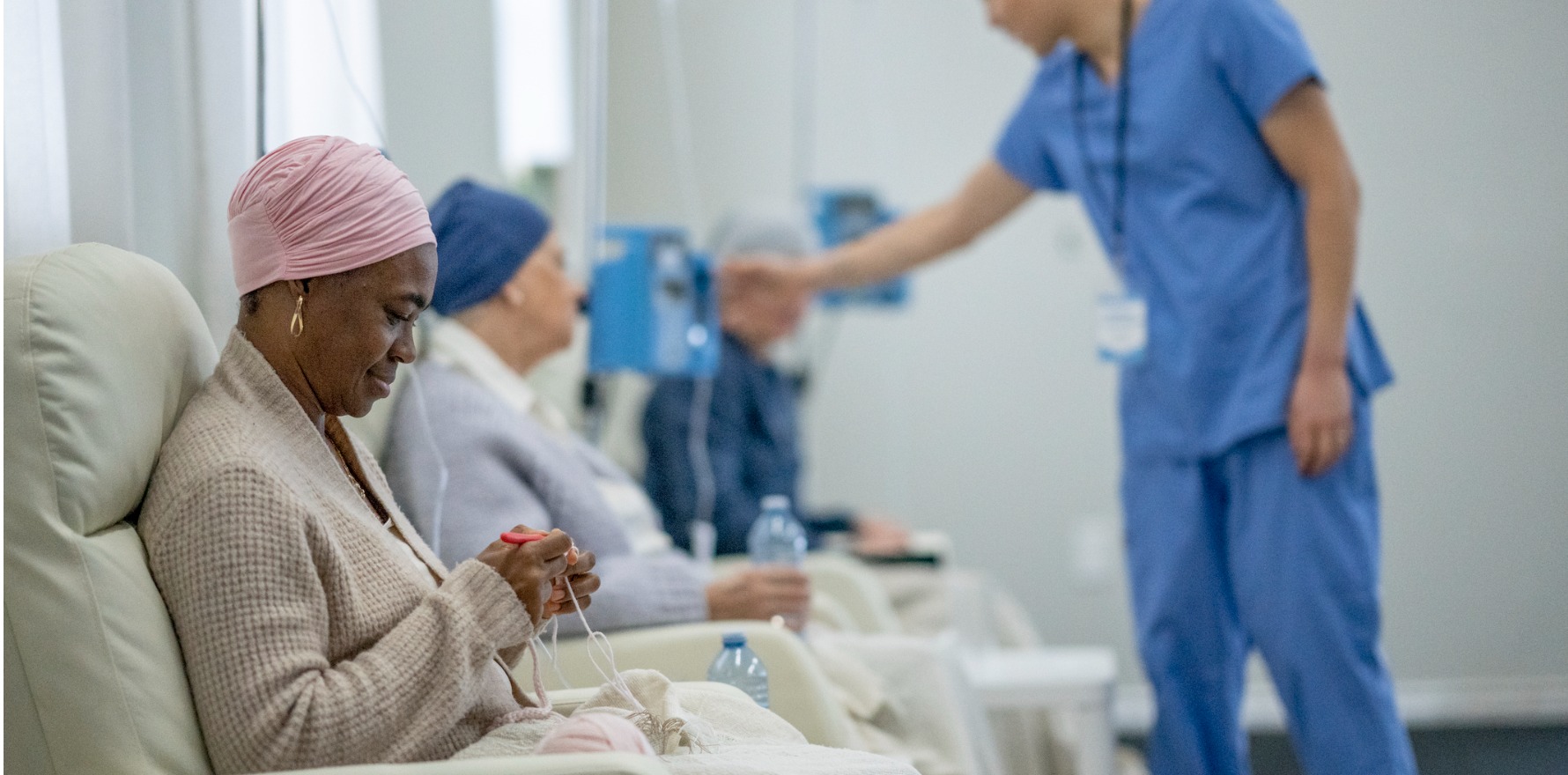A clinical trial one-stop-shop and changes to the national bowel screening program are a couple of the cancer spending headlines delivered on Tuesday night.
The 2024 federal budget includes around $146.1 billion for health and aged care, with $71 million over four years to improve cancer outcomes, in line with the Australian Cancer Plan.
This includes:
- $18.8 million for a “National One Stop Shop” for clinical trials that the government says “will harmonise and nationalise the administration and regulation of health and medical research … including through establishing an easy-to-use website which will help patients, researchers and industry find, conduct and participate in clinical trials and research”. (Full coverage of the One Stop Shop here)
- $1.4 billion over 13 years for two new Medical Research Future Fund missions focussing on better outcomes for people with low survival cancers such as pancreatic, lung and liver cancer, and improving services for groups who don’t have equitable access.
- The expansion of the National Bowel Cancer Screening Program to allow people aged 45-49 to opt in. (Full coverage of the NBCSP changes here)
- $38.8 million over four years to the states and territories to continue the Federation Funding Agreement for the participant follow-up function of the National Bowel Cancer Screening Program.
- $15 million over two years to continue the national skin cancer prevention campaign.
- $10.3 million over four years to Melanoma Institute Australia for targeted research into skin cancer screening and developing a roadmap for a national, targeted skin cancer screening program, in consultation with Cancer Australia and the skin cancer sector.
- $6.9 million over four years to Canteen to continue the Youth Cancer Services program which provides in-hospital multidisciplinary cancer care for people aged 15-25 years.
- Additional Pharmaceutical Benefits Scheme listings for new treatments, including abemaciclib for breast cancer.
Other budget winners
In other health spending, Urgent Care Clinics, which were a big-ticket item in last year’s federal budget, emerged again with a $227 million package for another 29 UCCs.
The funding boost means the number of urgent care clinics will rise to 87 and the budget also contains funding for clinics in regional and remote areas. Since opening, according to the DoHAC, more than 400,000 visits have been made to the clinics, with almost one-third of these children aged under 15 years.
GPs were immediately on the attack through. RACGP president Dr Nicole Higgins said it was a “missed opportunity”, while Mr Butler professed himself bemused by the response.
“It’s never really been very clear why they are opposed to this important program that is delivering terrific care to people, often when they can’t get access to their usual GP,” he said in Adelaide on the weekend.
One in nine women in Australia have endometriosis and they will benefit from items worth $168.60 for an initial gynaecologist consultation of at least 45 minutes (up from $95.60) and subsequent consultations worth $84.35 for at least 45 minutes (up from $48.05).
Last year’s federal budget created a new item for GP consults 60 minutes or longer. The government is now including this in its $107 million package to support women with endometriosis, which also includes 22 pelvic pain clinics opened in the past year and support for research and awareness.
The government will spend $49.1 million to provide about 430,000 more appointments from 1 July.
Other line items of interest include $3 billion to go towards covering pharmacy business losses from the 60-day dispensing program and $10.6 million over the next two years for organisations representing people with physical, intellectual, sensory or psychosocial disability, and organisations championing equality and accessibility for people with disability.
For the first time this includes grants to representative groups for autism, psychosocial disability, physical disability and people with chromosomal variations, as well as specific funding to represent LBTQIA+ people with disabilities.
Related
Budget losers
The future of the Australian Centre of Disease Control remains unclear at best, and precarious at worst, after a federal budget that gave it nothing and ignored it entirely in all its documentation.
Established on the back of the Albanese government’s 2022 election promise of “improved pandemic preparedness and response” and set up with $90 million of initial funding, the ACDC remains almost totally invisible.
“The absence of any budget line item for the ACDC suggests pandemic amnesia four years after the lives of everyone in Australia was upended,” said Public Health Association of Australia CEO, Adjunct Professor Terry Slevin.
“We had hoped that this budget would contain clear resource allocation and timelines explaining how and when the Albanese Government would fulfil its election promise to establish and fund the ACDC. That hope has been dashed.”
Professor Slevin said the silence had created uncertainty about the future of disease control in Australia.
“[It] should be our chance to reduce the burden of health threats both known and unknown,” he said.
The ACDC wasn’t the only orphan on the night, however.
Private hospitals got no love either, with Catholic Health Australia’s CEO Jason Kara saying it was a “missed opportunity”.
“The government has ignored a critical part of the health system that performs two thirds of elective surgeries in this country, missing an opportunity to take pressure off public hospitals” he said.
“In the past five years, 71 private hospital services have closed down as a result of workforce shortages and funding from insurers failing to keep pace with soaring costs of providing care.
“Without immediate action, these closures will continue and more private patients will be pushed into public hospitals which are already operating over capacity, impacting patient access to timely care and increasing costs for taxpayers.
“In addition to reducing demand on the public system, private hospitals provide patients with choice and improved access to care and are therefore a vital component of Australia’s health system.”
The NDIS didn’t just go unnoticed by the budget. It lost money, with spending on the program expected to be $14 billion less over four years than projected in the mid-year economic and fiscal outlook.
That saving comes from the ending of the automatic top-up of NDIS plans once a participant has used all their funds.
Treasury forecasts expect NDIS Commonwealth-funded participant payment growth to average 9.2% year on year compared to 10.1% predicted at the MYEFO in December.
The government will spend about $84 million over two years to boost fraud detection capability at the National Disability Insurance Agency.





